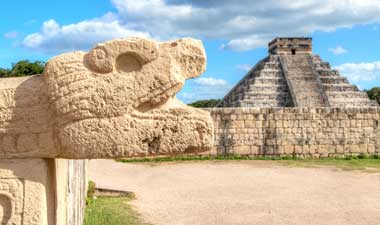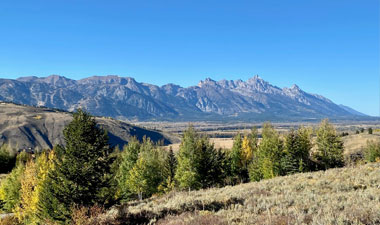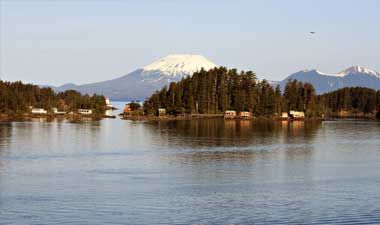Just a few blocks from our hotel, we enter the courtyard of a 17th century historic building which was once the home of the Count of Miravalle. Passing through the enormous carved wooden doors, the tree-filled courtyard opens before us. Though open to the sky, the trees are manicured to provide a rich, green canopy for shade and protection from foul weather. A retractable roof stands at the ready for those times the trees are not enough. Soft lights glow among the limbs. We hear the gentle hum of subdued conversation like crickets on a summer night, and know that we have entered a truly special place.
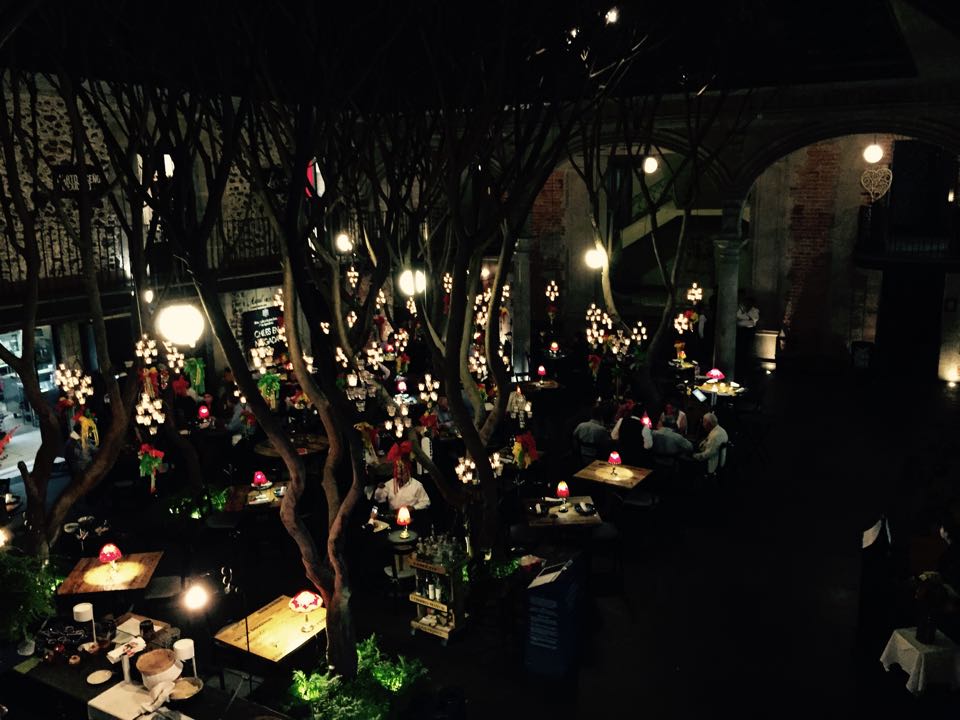 This is the Azul Historico, the third and most successful restaurant opened by Ricardo Munoz Zurita. Here upon the centuries-old cobblestones, you can dine on Mexican dishes prepared from traditional recipes from across Mexico.
This is the Azul Historico, the third and most successful restaurant opened by Ricardo Munoz Zurita. Here upon the centuries-old cobblestones, you can dine on Mexican dishes prepared from traditional recipes from across Mexico.
We are immediately taken to a quiet table near the old colonial wall while candles flicker softly from the classic wooden table. The table is adorned with authentic blue and white Mexican dishes with beautiful designs and hand carved bowls made from calabash gourds. We learn that these gourds are the traditional bowls for drinking Mezcal, a popular liquor distilled from the agave plant. Azul carries several kinds of Mezcal, which is a traditional Oaxaca drink. Our table, located off to the side and under the trees, gives us the feeling of being all alone on a private terrace rather than in a restaurant in the heart of Mexico City.
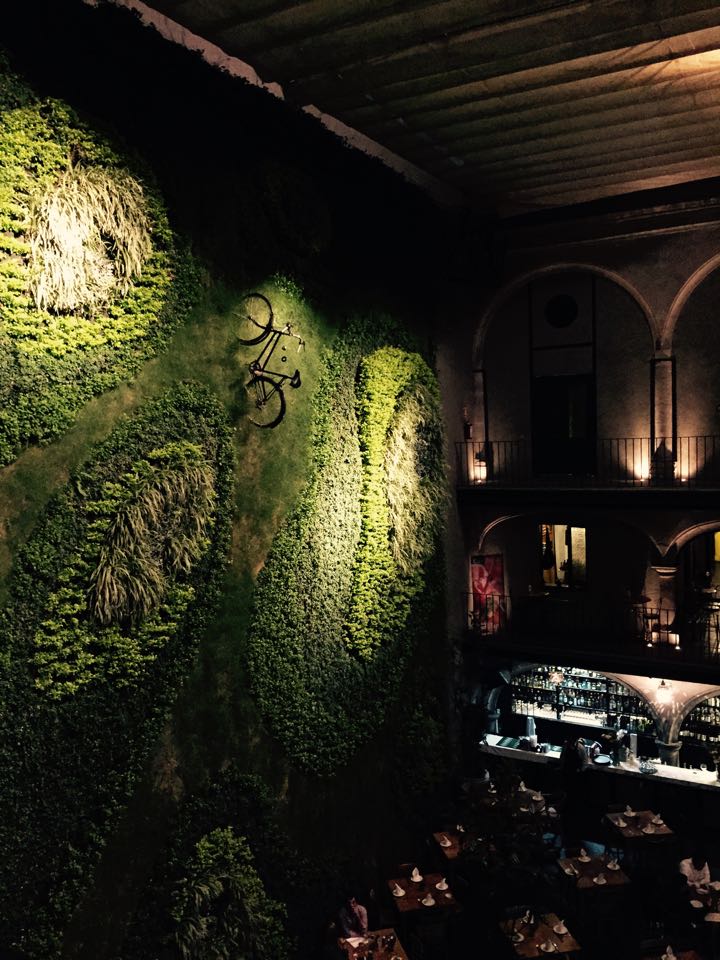 Our evening starts with two glasses of Mexican vino tinto (red wine) and Guacamole Copeteado Con Chapulines. This traditional guacamole is served with fried grasshoppers and home-made tortilla chips. Feeling brave, we try the grasshoppers. They are crunchy and taste of lime and salt and offer a nice contrast to the rich creamy guacamole. Along with our appetizer comes home-made bread and the most incredible trio of salsas – green, red, and super-hot. Very different than the chips and salsa you would expect from a Mexican restaurant in the States. The bread is light and airy and with the addition of the salsa, an exotically delicious start to our evening.
Our evening starts with two glasses of Mexican vino tinto (red wine) and Guacamole Copeteado Con Chapulines. This traditional guacamole is served with fried grasshoppers and home-made tortilla chips. Feeling brave, we try the grasshoppers. They are crunchy and taste of lime and salt and offer a nice contrast to the rich creamy guacamole. Along with our appetizer comes home-made bread and the most incredible trio of salsas – green, red, and super-hot. Very different than the chips and salsa you would expect from a Mexican restaurant in the States. The bread is light and airy and with the addition of the salsa, an exotically delicious start to our evening.
Following the Guacamole, we order the Sopa de Tortilla Oaxaquena or Oaxacan Tortilla Soup. It has a chicken broth base with tomato, shredded chicken, cream, avocado and tortilla chips, and is a traditional recipe from Oaxaca in Southern Mexico. The presentation is unique as the soup comes in a jeweled box and the broth is poured over the ingredients at the table.
For our entrees, we decide on two of the house specialties, Enchiladas de Mole Negro and Buñuelos Rellenos de Pato Rostizado. The enchiladas are stuffed with chicken and covered in a rich Oaxacan black mole. Though many of us are familiar with 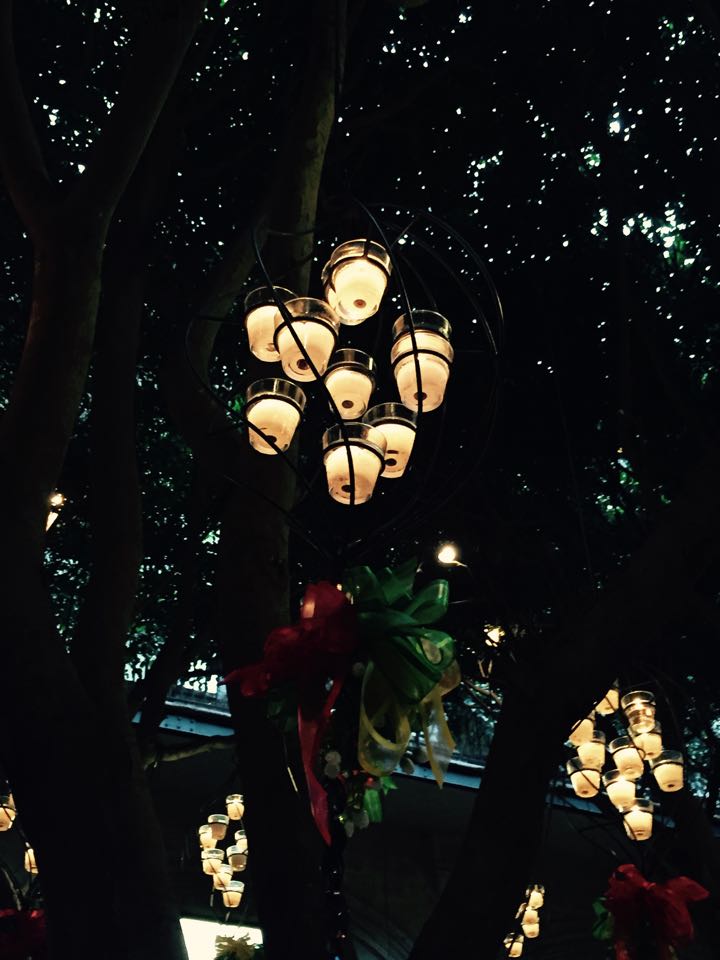 enchiladas, buñuelos were something new. Buñuelos are fried dough, usually served with a filling and topping. They are popular throughout Latin America as well as Turkey, Greece and Spain. In Latin America, they are seen as a symbol of good luck. These came filled with roasted duck, presented vertically on the plate, and covered in black mole. Lucky indeed. The mole here is nothing like you would expect with its dark chocolate flavor, and not saturated with sugar like we are used to in the States. The Oaxacan mole was dark chocolate with notes of chipotle and a hint of heat while the black mole had a richer, smoky flavor from the blackened chipotle peppers. In Mexico, there are as many different mole recipes as there are chefs to prepare them. A Oaxacan mole can have over 30 ingredients and take all day to prepare.
enchiladas, buñuelos were something new. Buñuelos are fried dough, usually served with a filling and topping. They are popular throughout Latin America as well as Turkey, Greece and Spain. In Latin America, they are seen as a symbol of good luck. These came filled with roasted duck, presented vertically on the plate, and covered in black mole. Lucky indeed. The mole here is nothing like you would expect with its dark chocolate flavor, and not saturated with sugar like we are used to in the States. The Oaxacan mole was dark chocolate with notes of chipotle and a hint of heat while the black mole had a richer, smoky flavor from the blackened chipotle peppers. In Mexico, there are as many different mole recipes as there are chefs to prepare them. A Oaxacan mole can have over 30 ingredients and take all day to prepare.
Needless to say, there was little room for dessert, though there were many tempting dishes on the menu. The Pastel de Chocolate Suave, or soft chocolate cake served with a gorgonzola ice cream looked intriguing. For the traditional there was apple pie with vanilla ice cream.
After dinner we stroll through the building. We wander into some charming boutiques selling traditional Mexican artwork displaying different renditions of Catrina, a popular figure from El Dia de los Muertos. Others offer pottery, knick-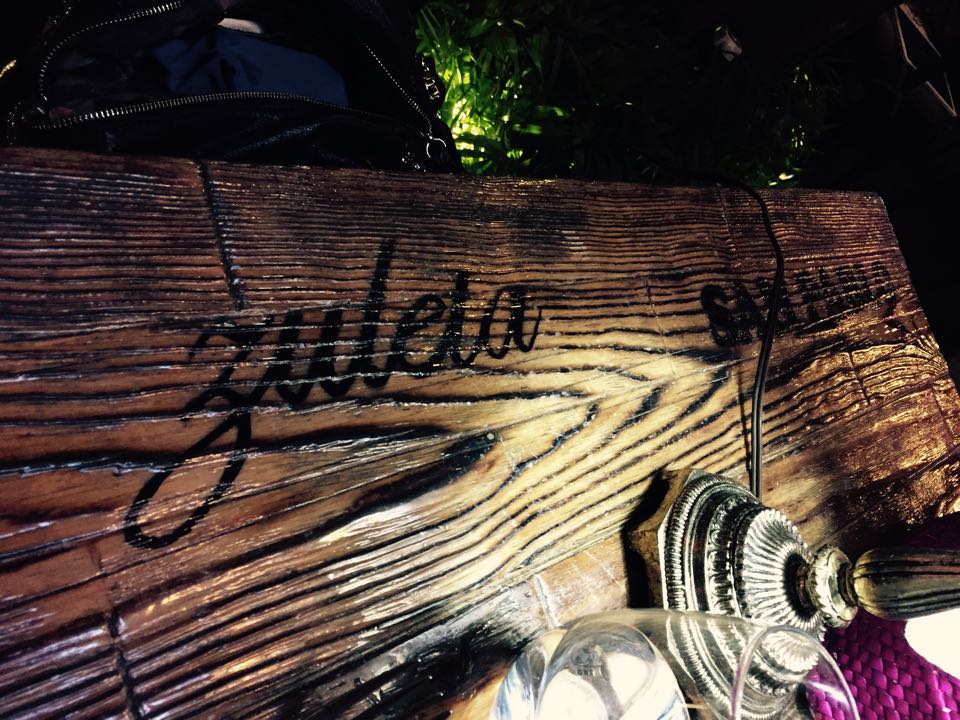 knacks and home-spun clothing made by artisans right there in the building. Several other restaurants are scattered throughout the three floors of the building.
knacks and home-spun clothing made by artisans right there in the building. Several other restaurants are scattered throughout the three floors of the building.
The building was renovated by the Groupo Habita for their Downtown Mexico Hotel. They specialize in chic, bohemian-style hotels, which attract a hip crowd of Mexican and savvy travelers to their establishments throughout Mexico and New York. The hotel looks down into the two courtyards. One entire wall of the courtyard is covered with grass and has an old bike attached to it, as if it is pedaling up the wall. At the entrance, you can watch the Mexican women in traditional garb preparing the moles you will be enjoying later at Azul.
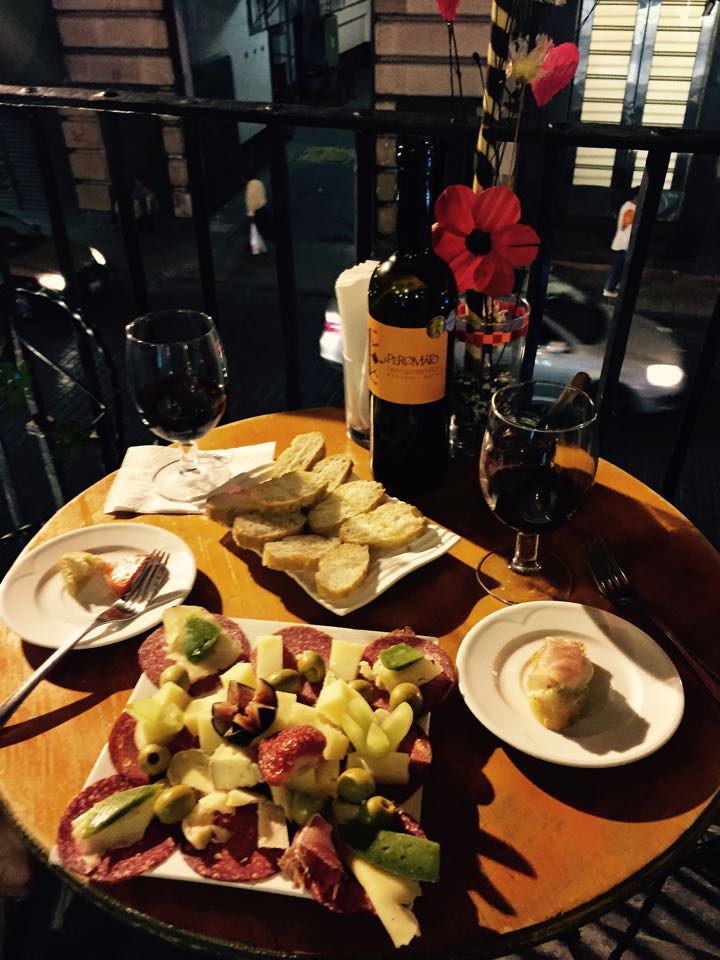 Tucked in a corner on the second floor, we came across a little Italian café that serves tapas plates of Italian and Spanish cheeses and meats, and of course Mexican chorizo. They draw you in with a free glass of Mexican wine which quite honestly was very good. Then out comes a little sampling of cheese and salami. Our server had just returned from Barcelona and was extolling the differences between Mexican Spanish and Spanish from Spain. By now we were hooked and it looked like we were eating again. We sat out on a sweet little balcony with only one table overlooking the bustling street outside the building. People were heading home or out for the evening, grabbing a quick antojito from one of the local street vendors below.
Tucked in a corner on the second floor, we came across a little Italian café that serves tapas plates of Italian and Spanish cheeses and meats, and of course Mexican chorizo. They draw you in with a free glass of Mexican wine which quite honestly was very good. Then out comes a little sampling of cheese and salami. Our server had just returned from Barcelona and was extolling the differences between Mexican Spanish and Spanish from Spain. By now we were hooked and it looked like we were eating again. We sat out on a sweet little balcony with only one table overlooking the bustling street outside the building. People were heading home or out for the evening, grabbing a quick antojito from one of the local street vendors below.
After our tapas and wine, we wandered upstairs to the Downtown Hotel rooftop terrace and pool. Here there is a covered cantina serving more small plates with cocktails and a DJ. It is located next to the pool. If you prefer you can sit in lounge chairs and enjoy the evening sunset while sipping a Mexican style mojito with Mezcal. On the other end is a mini-garden of potted plants next to a secluded hot tub. As we sat and enjoyed our Mexican-style Mojitos made with the local favorite Mezcal I found myself thinking of all of the beautiful history surrounding us in all directions. Countless roof top gardens amid the eclectic, historic architecture, unlike any city in the States. Here, under the Mexican stars we were having our first of many magical moments in Mexico. We wouldn’t change it for the world.
News & Blog Categories
Trending Posts
Recent Posts
Featured Posts
![]()
Travel Insurance with AIG Travel Guard
We have plans. Lots of them. Why? So you can easily find the one that fits. And with our plans, it’s not just about coverage. It’s about unique services. Lost your bag? We can help track it with Bag Trak®. Or we can cover your losses if it isn’t found. It’s simple. We have the coverage options and assistance services you want for your globetrotting travels. Read More
Travel Restrictions by Sherpa What to know

Future Cruise Credits What to know
If you are holding on tight to your Future Cruise Credits (FCCs) waiting for the perfect time and itinerary to put them back in use, many of them expire soon! Now is a great time to check the status of your FCC with an All-Travel Travel Advisor. Read More

Real ID Deadline Extension
Starting on May 3, 2023 travelers who elect to use a state-issued driver’s license at Transportation Security Administration (TSA) airport checkpoints must ensure that they are Real ID-compliant, which is designated by a star in a circle in the upper right corner of the license. Read More




